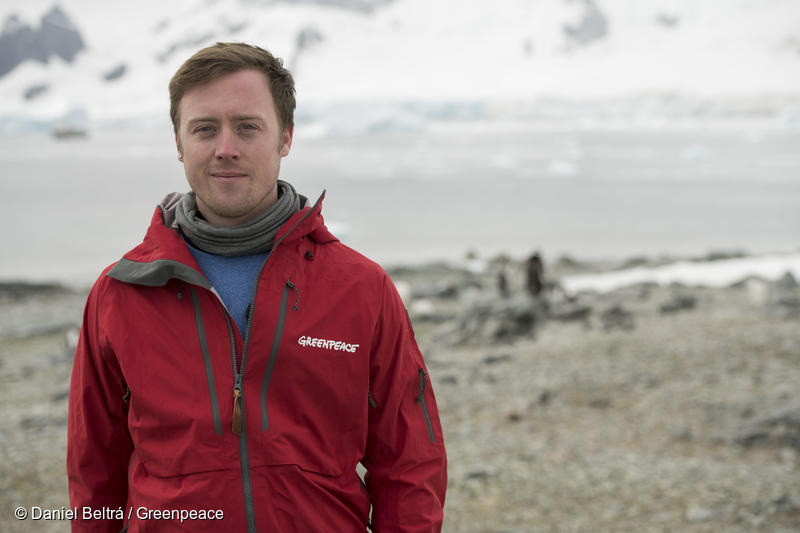How to change the world, one plastic bottle at a time

 Hi, I’m Will and I’ve dedicated the last 3 years of my life to the anti-plastics movement.
Hi, I’m Will and I’ve dedicated the last 3 years of my life to the anti-plastics movement.
As Head of the Oceans campaign at Greenpeace UK, I’ve been working with governments and companies to prevent our plastic crisis, as well as researching what everyday consumers can do to reduce plastic pollution.
I’ve learnt a lot and I’ve put it all in a book called How to Give Up Plastic, which is packed with tips and tricks to help you reduce your plastic footprint in your homes, communities and workplaces.
I’ve just returned from a month-long expedition to the Antarctic, where our team of scientists onboard found something shocking – their snow and water samples were contaminated with microplastic waste and persistent hazardous chemicals – showing that plastic pollution is reaching the most remote region on the planet.
But how is it getting there? Here’s an extract from my book, How to Give Up Plastic, where I answer the top three questions I get asked about how plastic gets into the environment in the first place:
1. How much plastic is already in the ocean (and can’t we clean it up)?
Working out exactly how much plastic is already in the ocean is a tricky business. Different factors make such estimates difficult: for example, which kinds of plastic float and are therefore more likely to be found on beaches, compared to ones which sink out of sight down to the seabed; the invisibility of so much of the plastic in the ocean, like microfibres and microplastics, which can be impossible to see with the naked eye; and perhaps most importantly, the scale of the ocean itself!
Over two-thirds of our blue planet is covered by the ocean, and we have observed only a minute fraction of the seabed, making any comprehensive survey of how much plastic is out there remarkably difficult. Despite the difficulties, Ocean Conservancy working with the McKinsey Center for Business and Environment has estimated that there is already 150 million tonnes of plastic in the ocean. This is a worrying enough figure; however, the Ellen MacArthur Foundation estimates that at the rate we are increasing production, plastic could even outweigh fish in the ocean by 2050. It’s hard to imagine any technological or human effort managing to clean up 150 million tonnes of plastic. That’s the equivalent weight to 300 of the tallest tower in the world, the Burj Khalifa, but spread across every ocean in the world, from the sea surface to the deepest trench. In short, it probably can’t be done, which is why efforts to clean up, though laudable and necessary in particular locations where plastic is causing major environmental or infrastructure problems, can only have limited success.

The global movement to reduce plastic needs to focus on getting rid of it at source as the only way to prevent it from getting into the ocean in the first place. Of course, we need to pick up plastic on our beaches, and governments and companies need to sponsor efforts to do mass clean-ups, but unless we start reducing the amount of plastic overall, we’ll only end up in an endless cycle of having to repeat these clean-ups.
2. How much plastic enters the ocean every year?
At current estimates between 4.8 million and 12.7 million tonnes of plastic waste enter the ocean every year. That’s almost a rubbish truck every minute, and a recent report by the UK Government about the future of the ocean estimated that the amount of plastic waste entering the ocean could treble in the next ten years.
3. Where is it all coming from?
This is a harder question to answer. Research shows that approximately 80 per cent of all plastic in the ocean originates on land rather than from ships at sea. It can end up in the ocean in many ways.
- Microfibres, which can be released through washing our clothes, account for roughly a third of plastic in the ocean.
- Plastic that isn’t disposed of correctly leads to litter blowing into waterways and being carried out into the ocean.
- Plastic that doesn’t get recycled can end up going to landfill sites on the coast that might leak into the sea, as well as many other routes to the open ocean where currents will take it to the four corners of the globe.
The enormous quantity of plastic being produced means that even vastly improved waste and recycling infrastructure would not capture all plastic. Even a proportionally small amount of leakage (plastic that is meant to be disposed of properly but ‘leaks’ from the system) can have major impacts. In fact, scientists estimate that currently nearly third of all plastic waste manages to evade the waste and recycling sector.
It’s clear that the key to stop plastic pollution is to reduce the amount of plastic we use – How to Give Up Plastic is the ultimate guide to help you do this. Buy your copy today!
Article Tagged as: Featured, Plastics, end ocean plastics, greenpeace, microbeads, microplastics, ocean plastic, oceans, plastic, plastic pollution

